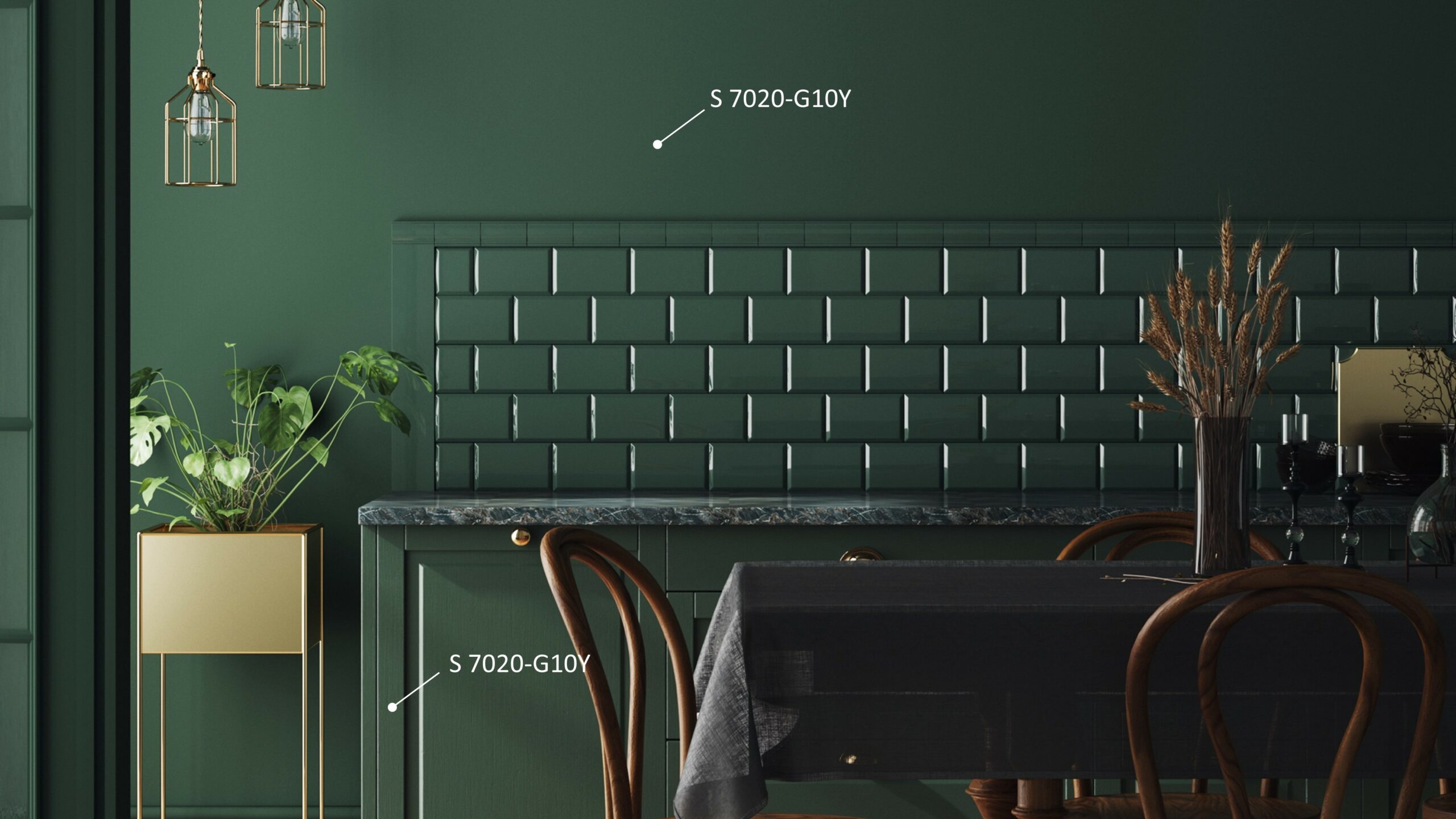Back to Course
19. NCS in kitchen studios II
0% Complete
0/0 Steps
Last, a very important aspect to consider is metamerism. This is when two colors look the same in one light, but different in another. A common situation is that a client comes into the paint store with a pillow from their sofa and would like the walls to match. But there’s an easy mistake to make – when you measure the inherent color, it could be different from the perceived color in the clients space. Therefore, if the clients lighting at home (daylight and/or artificial light) makes the pigment react different than how it reacts in the store, metamerism will occur.
In the picture you can see the inherent color sample and how it was perceived in the shop, but the sofa in the living room is perceived as more chromatic because of the warm artificial light. So, when the client painted the wall in the inherent color that was measured in the shop, the perception was different because the production of the color for the paint and the sofa was different.
In the picture you can see the inherent color sample and how it was perceived in the shop, but the sofa in the living room is perceived as more chromatic because of the warm artificial light. So, when the client painted the wall in the inherent color that was measured in the shop, the perception was different because the production of the color for the paint and the sofa was different.

Minimize the risk with NCS
A recommendation to minimize the risk of metamerism is to work with NCS Standard colors. The reason why working with NCS minimizes the risk is after mixing the paint, producers check their paint with our color samples in daylight. This means that we have minimized the risk of metamerism for NCS Standard colors in daylight. However, metamerism could still appear if the customer does not have any daylight and for example warmer light sources than you have in the store. Therefore, the only safe and accurate way of working with colour matching is to always check your colors in the actual lighting conditions.

